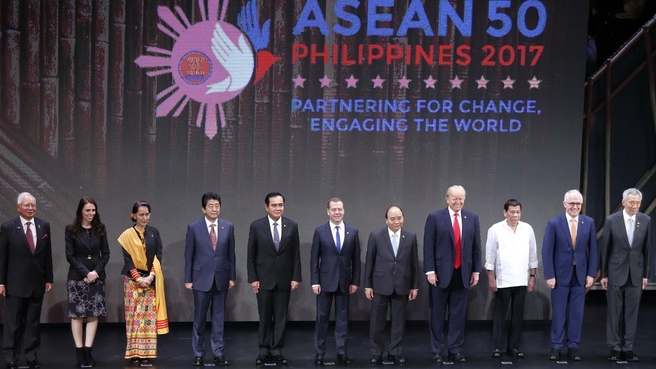The Limits to Regional Refugee Protection: the EU and ASEAN
The concurrent refugee crises affecting the countries of the EU and ASEAN since 2015 have brought to the fore long-standing questions regarding the feasibility of regional cooperation on refugee protection and responsibility sharing. The responses to the humanitarian crises in the Mediterranean and the Andaman Sea demonstrate the shared failure of the EU and ASEAN in responding to regional protection issues. In view of the shared refugee challenges, the question to be asked is whether regional bodies can adopt robust regional policies that prioritise responsibility for protection over individual state interests.
In the EU context, the sudden and unprecedented inflow of over a million asylum seekers fleeing conflict and instability in the Middle East and North and Sub-Saharan Africa revealed major flaws in the EU’s system for responsibility allocation. The failure to respond collectively to the developing humanitarian emergency is surprising given the value accorded to human rights and solidarity within the highly institutionalised framework of the Common European Asylum System (CEAS). Yet, the asymmetrical distribution of asylum responsibility, due to the application of the first entry principle of the Dublin system, has prompted member states to adopt restrictive policies that encourage asylum seekers to ‘seek protection elsewhere’ (Zaun 2017: 38; Maiani 2016: 110-111). These policies have negatively impacted on the standards of asylum protection in some countries and have contributed to inter-state conflict over refugee responsibility.
While, the crisis prompted a serious revaluation of Dublin system at the EU level (European Commission 2016), member states remain unwilling to adopt much-needed structural reforms to rules on responsibility allocation. The Council negotiations on a new Dublin system remain in deadlock as member states cannot come to an agreement on a responsibility sharing mechanism (Euobserver 2017). The majority of member states fear that any structural changes will increase their share of asylum seekers. Despite the language of solidarity, the EU’s asylum system has in fact hindered responsibility sharing in the EU.
ASEAN has similarly failed to develop a common approach on refugee matters. The main challenge to regional refugee cooperation has been the fundamental reluctance among ASEAN members to develop regional asylum policies and laws that may infringe on national practices. The principle of non-interference in the internal affairs of member states has translated into an unwillingness to develop formal institutions and legally binding obligations on refugee protection. While the ASEAN Human Rights Declaration (AHRD) and the ASEAN Intergovernmental Commission on Human Rights (AICHR) reflect a commitment to ensuring that the regional body is responsive to human rights challenges in the region, there has been little political will among members to develop instruments that may interfere with the domestic policies of ASEAN countries. This is particularly the case with Myanmar, and the government’s actions against the Rohingya people.
Consequently, responses to the 2015 Andaman sea crisis have been primarily framed within the paradigm of illegal migration. While the 2015 crisis forced ASEAN to respond collectively, the discussions were primarily focused on the issue of illegal migration and trafficking (McAuliffe 2016, 30). Unfortunately, the state-based security approach to the refugee crisis has failed to address the protection challenges of refugees in the region.
Both crises have shown the limits of regionalism in delivering strong regional frameworks for refugee protection and responsibility sharing. The control over who can access asylum procedures and the corresponding protection duties remains a core prerogative of the nation state. Attempts by regional bodies to establish refugee protection and responsibility sharing frameworks have been predictably met with resistance. Whilst there are important differences between the governance models of the EU and ASEAN, both cases have shown that responsibility for protection is seriously limited at a time when regional responses are most needed to prevent further human catastrophe. Further research into how regional responses could be me made more effective, particularly the balance between state interests and the protection needs of refugees, remains crucial.
References:
- European Commission (2016d) Communication from the Commission to the European Parliament and the Council, ‘Towards a Reform of the Common European Asylum System and Enhancing Legal Avenues to Europe’ COM(2016) 197 final, Brussels.
- Euobserver 2017, ‘EU states tackle Dublin asylum reform “line by line”’ Euobserver, 7 March, Available from: https://euobserver.com/migration/141236 (Accessed on 13 April 2018).
- Maiani, F 2016, ‘The Dublin III Regulation: A New Legal Framework for a More Humane System?’, in V Chetail, P de Bruycker and F Maiani (eds), Reforming the Common European Asylum System, Brill Nijhoff: Leiden, pp.101-142.
- McAuliffe, M 2016 ‘Resolving Policy Conundrums: Enhancing Humanitarian Protection in Southeast Asia’ Migration Policy Institute, Washington DC.
- Zaun, N 2017, EU asylum policies: the power of strong regulating states, Palgrave Macmillan (ebook).
2 Responses
Leave a Reply
You must be logged in to post a comment.

Pingback : Thematic Focus: General
Pingback : Thematic Focus: General – AnAttorney.com